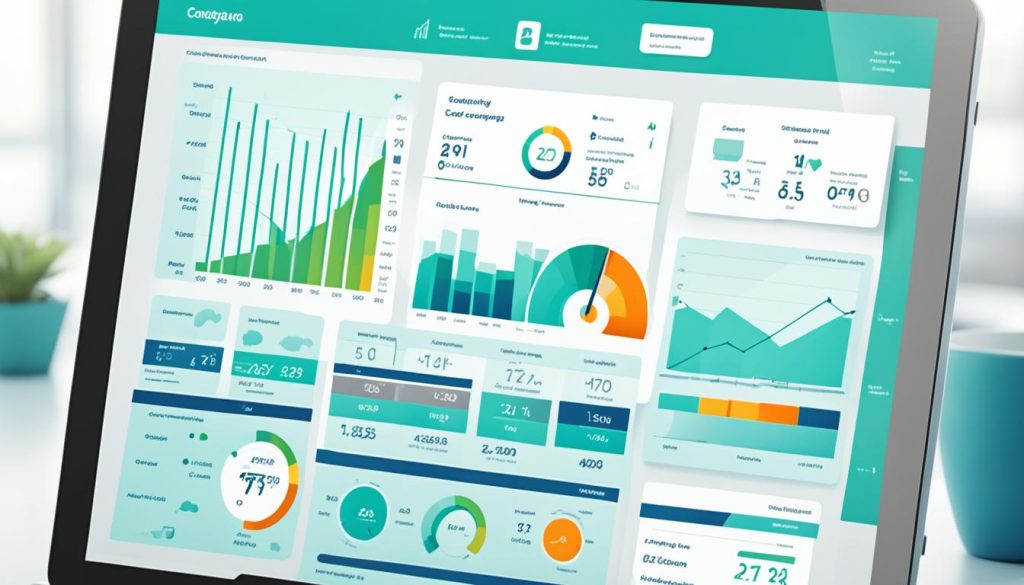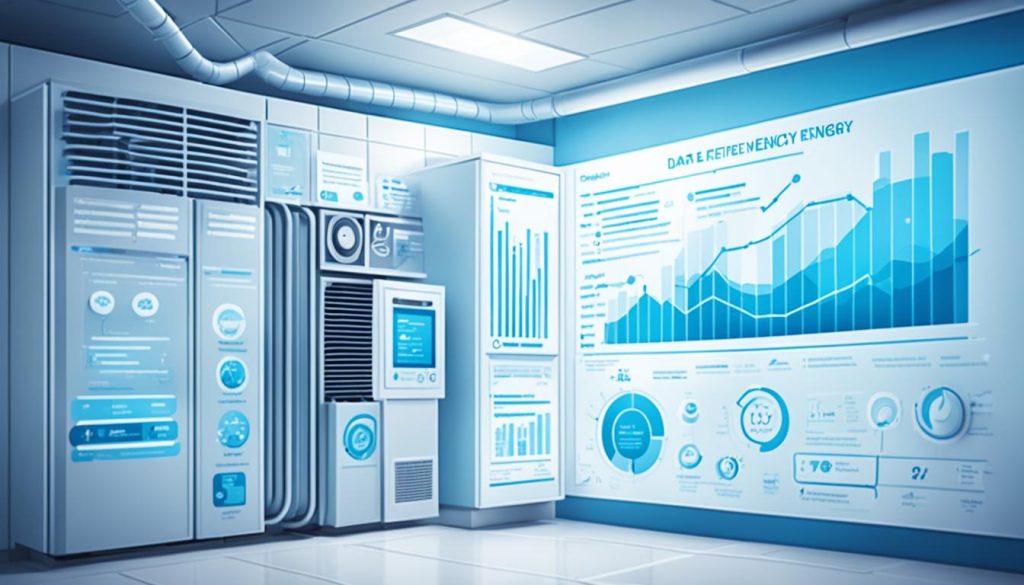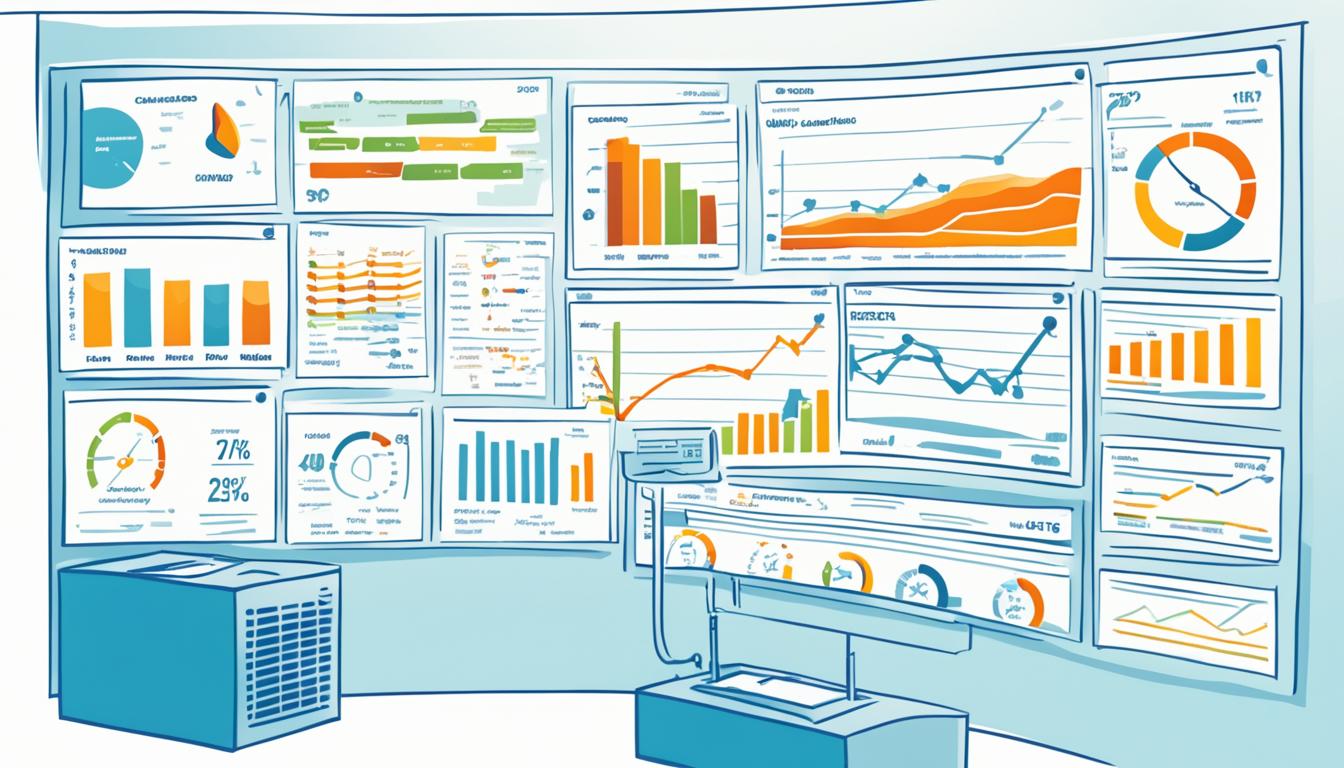You can use HVAC load calculation data to boost your business smarts. By looking into the info from heating, ventilation, and air conditioning systems, you can make smarter choices. This helps with saving energy, making systems work better, and making customers happier.
HVAC systems use a lot of energy, with chiller plants taking up 35% of it. Data analytics can help you find important insights. These insights lead to better operations, maintenance before problems start, and smarter decisions.
Thanks to smart equipment and more digital info, you now have a lot of data. This big data is a chance to make your HVAC business smarter. With a single chiller plant making over 1 million records a year, you have a lot of info to use for better strategies.
How can HVAC load calculations improve energy efficiency?
What role does data analytics play in optimizing HVAC system performance?
How can leveraging HVAC data enhance customer satisfaction?
What are the challenges in managing and analyzing HVAC big data?
How can predictive maintenance be improved through HVAC load calculation data?
Understanding HVAC Load Calculations and Their Importance
HVAC load calculations are key to making indoor spaces comfortable and energy-efficient. They figure out the right size and power of heating, ventilation, and air conditioning systems for buildings.
Definition of HVAC Load Calculations
HVAC load calculations measure and analyze the heating and cooling needs of a space. They look at building size, insulation, how many people use it, and the local weather. This helps HVAC experts pick the right equipment and design systems that fit the space well.
Impact on Energy Efficiency and Comfort
Getting load calculations right affects energy use and comfort. When systems are the right size, they use less energy and cut down on bills. They also keep temperatures even, so there are no hot or cold spots.
Role in System Design and Optimization
Load calculations are key to designing systems well. They help pick the right HVAC parts and plan how they work together. By knowing exactly what a space needs, engineers can make solutions that work best and use less resources.
| Aspect | Benefit of Accurate Load Calculations |
|---|---|
| Energy Efficiency | Reduced energy consumption and lower operating costs |
| Comfort | Consistent temperature and humidity control |
| System Longevity | Proper sizing leads to less wear and tear on equipment |
| Environmental Impact | Decreased carbon footprint due to optimized energy use |
Using precise HVAC load calculations means your building’s climate control systems will meet your needs. This leads to better comfort and efficiency.
The Intersection of HVAC Systems and Big Data
HVAC big data is changing how we handle and improve building systems. With new tech, HVAC systems now create a lot of data. This brings both new chances and challenges for managing and analyzing this data.
Volume and Variety of HVAC Data
Today’s HVAC systems make a huge amount of data. A medium-sized building can make over 21 million records a year from 600 data points. This info comes from sensors, automation systems, and energy meters.
| Data Source | Type of Data | Frequency |
|---|---|---|
| Equipment Sensors | Temperature, Humidity, Pressure | Every 5 minutes |
| Building Automation Systems | Occupancy, Scheduling, Set Points | Every 15 minutes |
| Energy Meters | Electricity Consumption, Gas Usage | Hourly |
Challenges in Data Management and Analysis
Handling the huge amount of HVAC data is tough. It needs strong systems to store and organize terabytes of info. Finding important patterns and connections in millions of data points is also hard.
Opportunities for Improved Decision-Making
Even with the challenges, HVAC big data has big benefits. It lets you make better decisions by using all this info. You can improve system performance, predict when maintenance is needed, and save energy.
With data-driven insights, you can manage things proactively. This cuts downtime and costs while making people more comfortable.
Key Components of HVAC Load Calculation Data
Understanding the key parts of HVAC load calculation data is key for designing efficient heating and cooling systems. These components help figure out the right size and capacity of equipment for the best performance.
Building features are very important in load calculations. The size of the building, insulation levels, and window types all affect heating and cooling needs. Also, the local climate, including extreme temperatures and humidity, is a big factor.
But it’s not just about the building itself. Things like how often it’s used, the heat from equipment, and lighting also play a role in HVAC needs. Some calculations even consider how the building is oriented and how it’s shaded.
| HVAC Data Component | Impact on Load Calculation |
|---|---|
| Square Footage | Determines the volume of space to heat or cool |
| Insulation Values | Affects heat transfer through walls and roof |
| Window Specifications | Influences solar heat gain and loss |
| Occupancy Patterns | Impacts internal heat generation |
| Equipment Heat Loads | Adds to the cooling requirements |
By gathering and analyzing these HVAC data components accurately, you can make sure your load calculations are precise. This leads to better system design, more energy efficiency, and greater comfort for those in the building.
Transforming Raw Data into Actionable Insights
HVAC data analytics turns raw data into valuable insights for your business. It involves collecting, organizing, and interpreting data. This helps you make smart decisions about your HVAC systems.
Data Collection and Organization Techniques
Smart sensors and IoT devices are key to effective data collection. They collect real-time info on temperature, humidity, and energy use. Then, cloud-based systems store and organize this data for analysis.

Advanced Analytics and Machine Learning Applications
Machine learning algorithms analyze huge amounts of HVAC data. They find patterns and predict how the system will behave. These tools help predict maintenance needs, optimize energy use, and boost system performance.
| Machine Learning Application | Benefit |
|---|---|
| Predictive Maintenance | Reduces downtime and repair costs |
| Energy Optimization | Lowers utility bills |
| Comfort Prediction | Enhances occupant satisfaction |
Visualization Tools for Effective Data Interpretation
Data visualization tools make complex HVAC data easy to understand. Dashboards show important performance indicators. Heat maps display temperature levels across buildings. These tools help you quickly see the system’s status and make quick decisions.
By using these methods, you can fully use your HVAC data. This leads to better efficiency, lower costs, and more comfort for building occupants.
Leveraging HVAC Load Calculation Data for Better Business Intelligence
HVAC business intelligence changes how companies make decisions and improve performance. By using load calculation data, you get insights into building and equipment efficiency. This helps you compare to industry standards, find ways to save energy, and adjust maintenance plans.
Advanced analytics are key in making data useful. By looking at load calculation patterns, you can predict when maintenance is needed. This lets you improve equipment design and create better economic models. Staying proactive helps you avoid problems and keep systems running efficiently.
Data-driven decisions in HVAC management lead to big improvements:
- Less energy used
- Longer equipment life
- Better comfort for occupants
- Lower costs
To make the most of HVAC load calculation data, try these steps:
- Invest in strong data collection systems
- Use machine learning for pattern recognition
- Create dashboards for easy data reading
- Train staff in data analysis
- Keep your data models up to date
By following these tips, you can turn HVAC load calculation data into a powerful tool for growth and excellence. The insights will help you make smart decisions, leading to better performance and happier customers.
| Metric | Before Data Analysis | After Data Analysis | Improvement |
|---|---|---|---|
| Energy Efficiency | 70% | 85% | 21.4% |
| Maintenance Costs | $50,000/year | $35,000/year | 30% reduction |
| Customer Satisfaction | 75% | 92% | 22.7% increase |
| System Downtime | 48 hours/year | 12 hours/year | 75% reduction |
Optimizing Energy Efficiency through Data-Driven Decisions
Improving HVAC energy efficiency is key to cutting costs and helping the environment. By using data, you can make smart choices about how your HVAC system works. This lets you find ways to save energy and make changes that help.
Identifying Energy-Saving Opportunities
Looking at how your HVAC system works can show where it can be better. Find equipment that runs too much or not right. Monitoring how your system uses energy helps spot where it’s not doing well. Use this info to pick the best upgrades or changes for saving energy.
Implementing Targeted Efficiency Measures
After finding where you can improve, make changes. Replace old equipment with ones that use less energy. Change schedules to match when people are there. Adjust settings for better comfort and less energy use. These steps can cut energy use by 10-30%.

Monitoring and Verifying Energy Performance
Keeping an eye on your system’s energy use is important to keep saving energy. Use data to watch how much energy you use over time. This lets you see how your changes are working and find more ways to save. Regular checks make sure your system stays efficient as your building’s needs change.
| Efficiency Measure | Potential Energy Savings | Implementation Difficulty |
|---|---|---|
| Equipment Upgrades | 15-25% | High |
| Schedule Optimization | 5-15% | Low |
| Setpoint Adjustments | 3-10% | Low |
| Preventive Maintenance | 5-12% | Medium |
Using data to improve your HVAC system makes a big difference in energy efficiency. This method cuts costs, makes your space more comfortable, and makes your equipment last longer. Remember, keeping an eye on your system’s performance is an ongoing task that makes your system work better over time.
Enhancing Predictive Maintenance Strategies
HVAC predictive maintenance is changing how we take care of our heating and cooling systems. It uses data to predict problems before they start. This saves money and makes your equipment last longer.
Load calculation data is key to spotting when your HVAC system needs work. By looking at this data, technicians can see patterns that show when maintenance is needed. This way, you can avoid sudden breakdowns and keep your system running well all year.
| Traditional Maintenance | Data-Driven Maintenance |
|---|---|
| Reactive repairs | Proactive interventions |
| Fixed schedules | Dynamic, need-based timing |
| Generalized approach | Tailored to specific equipment |
To use HVAC predictive maintenance, you collect and analyze data from sensors in your system. This data shows how well your equipment is doing. By looking at energy use, temperature changes, and how often it runs, you can spot early signs of problems.
This method has big benefits. You’ll have less downtime, spend less on repairs, and use less energy. Your equipment will also last longer, meaning you won’t have to replace it as often. Using data to guide your maintenance is a wise choice for anyone who wants to make their HVAC system better.
Improving Customer Satisfaction and Comfort Levels
HVAC load calculation data can change how happy and comfortable people are in buildings. By using this info, you can make spaces that fit what each person likes and needs.
Personalized Comfort Settings
With data analysis, you can set up comfort settings just for each person. Your HVAC system can figure out when people are there and adjust the temperature for them. This makes people happier because they stay comfortable all day.
Proactive Service Delivery
By watching and predicting in real-time, you can fix problems before they start. Your HVAC team can catch issues early. This means less trouble and more comfort for everyone, making the place better for living or working.
Enhanced Occupant Experience
Using data to guide HVAC systems makes things better. You’ll get cleaner air, steady temperatures, and fast changes. These things make a place better to be in, making people happier with their space.





0 Comments